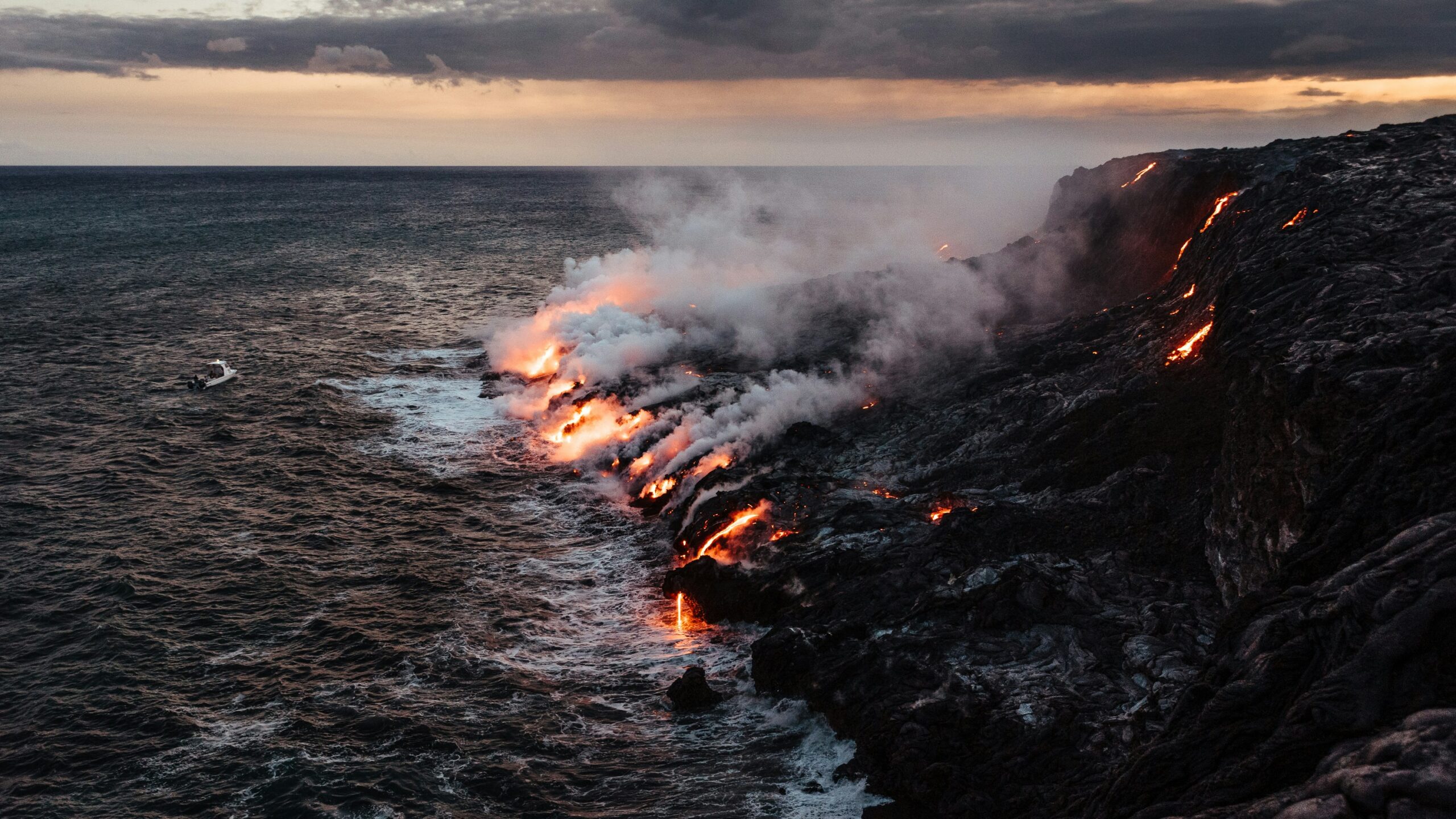One Day in Hawaii Volcanoes National Park: Top Hikes & Things to Do
By Daniella from Sampler Platter Travel – this guide to Hawaii Volcanoes National Park contains affiliate links to trusted partners!
Only have one day in Hawaii Volcanoes National Park and want to know how to maximize your time?
One day in the park may be short, but it gives you enough time to see the highlights. Of course, you’ll want to spend more time on the Big Island of Hawaii, so make sure to add a few days to your itinerary for a travel buffer.
We spent one day in Volcanoes National Park during our tour of the Big Island and loved it. We thought we got a good sample of everything that the park has to offer, with an incredible hike, a scenic drive, and more.
While you could certainly spend more than one day in Hawaii Volcanoes National Park, Sampler Platter Travel is dedicated to fast itineraries helping you prioritize things to do if you only have a short amount of time.
Happy sampling!
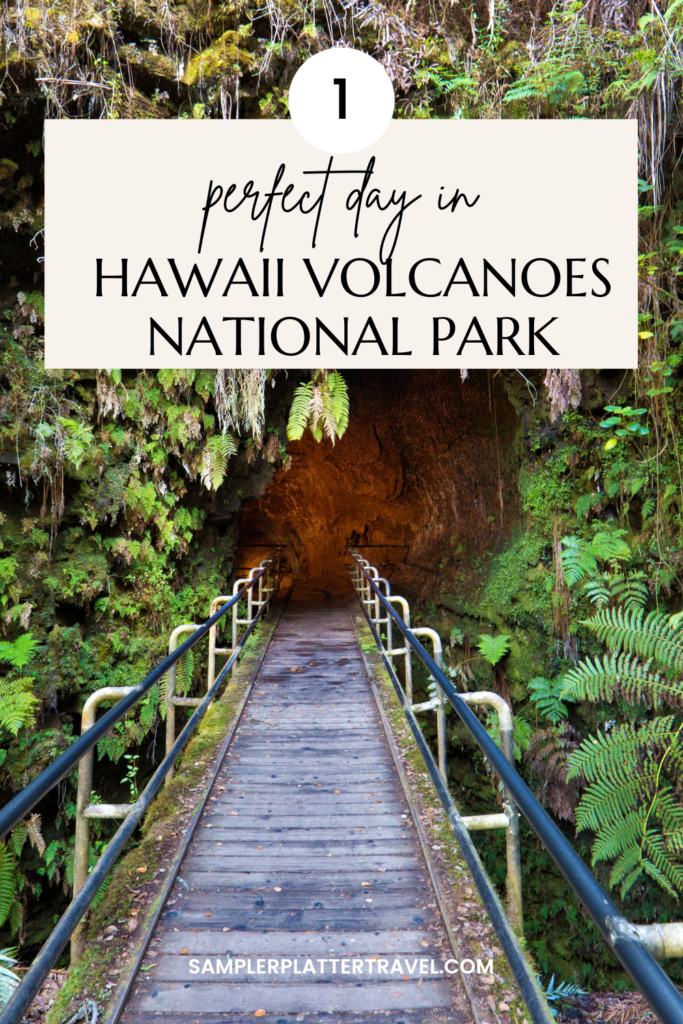
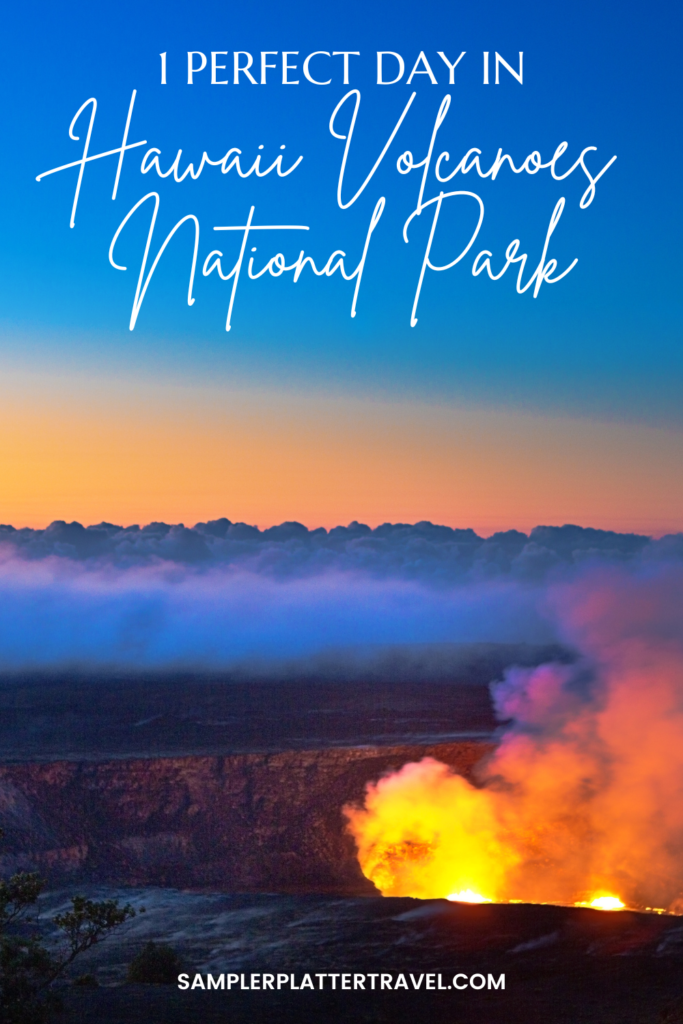
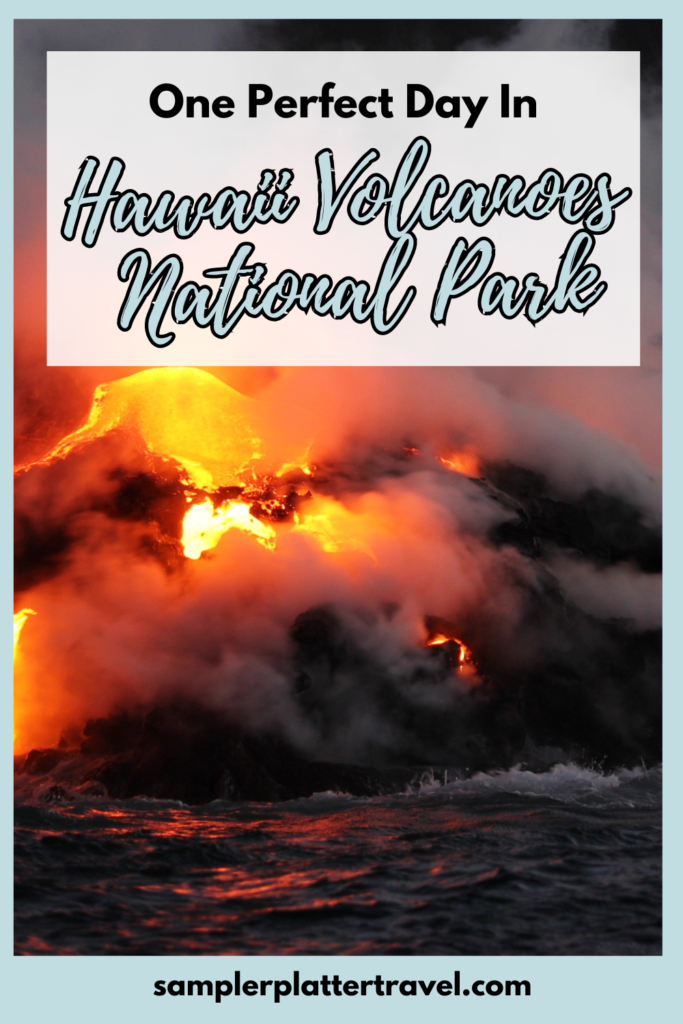
Introduction to Hawaii Volcanoes National Park
We’re starting our introduction with a bit of a subjective statement – Hawaii Volcanoes National Park is one of the coolest parks of the 63.
Yes, we know that 37 of them have active volcanoes, but Hawaii Volcanoes National Park includes it in their name!
This park is located on the Big Island of Hawaii and was established as a national park in 1916 to encompass two of the world’s most active volcanoes: Kilauea and Mauna Loa.
Hawaii Volcanoes has an incredibly diverse ecosystem, and you’re able to hike through lush rainforest, arid deserts, as well as a crater floor.
If you are on the Big Island of Hawaii, this is a must-visit! Even if you aren’t a hiker, there are some shorter trails and scenic drives to enjoy.
Caught the National Park bug?
Check out other blogs in our ‘One Day in a National Park’ series:

Top 5 Reasons to Visit Hawaii Volcanoes National Park
(1) Active Volcanoes
I know, we can’t stop talking about this! It’s just cool how the active volcanoes of Kilauea and Mauna Loa are within the park. We didn’t go during a time of eruption, but if you’re lucky enough, you can observe tons of flowing lava. Even when there isn’t an eruption, various steam vents throughout the park are still active.
(2) Diverse Ecosystems
The different ecosystems in Hawaii Volcanoes National Park are like night and day. One moment you are hiking through a lush rainforest that feels like the tropics of Hawaii and the next, you emerge onto the desert-like biome of a volcano crater. We did not encounter a lot of animals but it is said that you can see monkeys!
(3) Plethora of Hiking Trails
Hiking is one of the most popular things to do in Hawaii Volcanoes. The park offers over 150 miles of trails which are perfect for all types of adventurers.
My mom (who does not enjoy hiking whatsoever) successfully completed the Kīlauea Iki Trail, one of our most recommended trails. And dare I say, she enjoyed it. It gives you a perfect sample of everything that the park has to offer.
(4) Hawaiian Cultural Heritage
We must remember when visiting Hawaii that we are on native land, and we have to be respectful of the true owners.
When visiting Hawaii Volcanoes National Park, it’s important to take a moment to learn about traditional Hawaiian beliefs associated with the volcanoes.
There are various historic trails and ancient petroglyph sites that were used by native Hawaiians. Check with the visitor center for more information.
(5) Stargazing
If you’re lucky enough to stay in the park after dark, Hawaii Volcanoes National Park has wonderful stargazing opportunities thanks to its remote location with minimal light pollution.
You can stargaze at the wooden observation deck of the Mauna Ulu Lookout. Stargazing allows you to stay later in the park to view the Milky Way and a bunch of constellations.
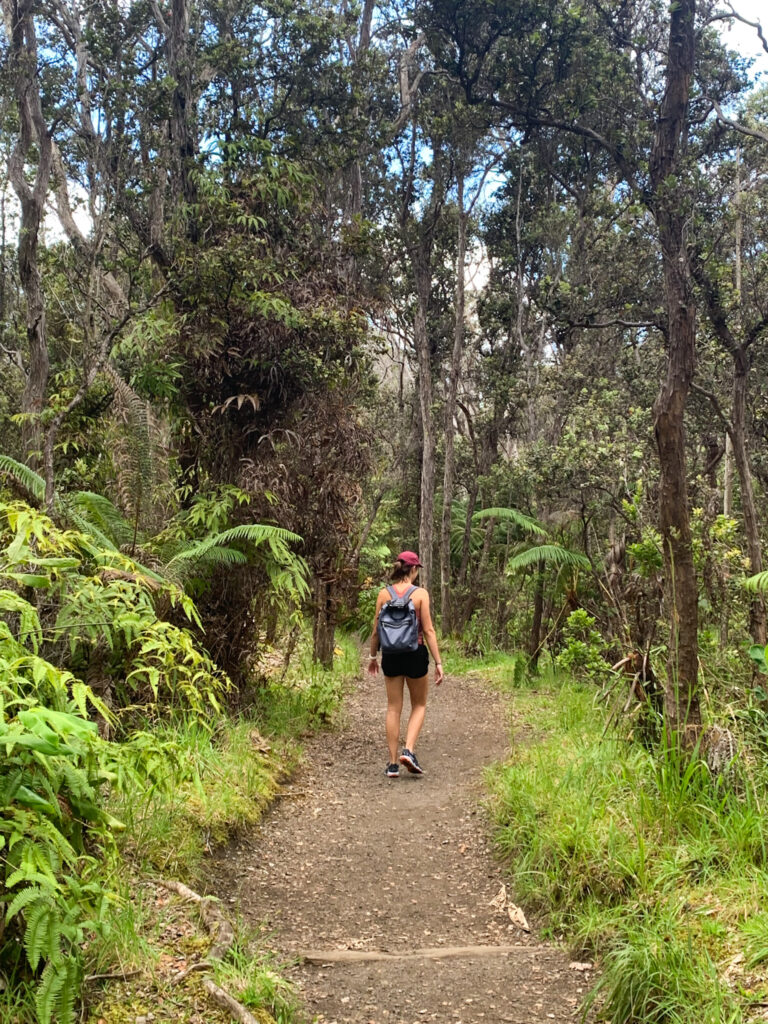
When Should You Visit Hawaii Volcanoes National Park
Spring is a great time to visit thanks to mild temperatures and lower humidity levels. There are fewer crowds compared to the summer months. Plus, if you’re interested in seeing beautiful flowers, this is the season when plants bloom.
Fall, the other shoulder season, also has great weather and hiking conditions with fewer crowds. Stargazing lovers should visit during this time for the most clear skies.
Winter can definitely get chilly, even in Hawaii. This is especially true at higher elevations like the volcano summits. However, there is increased activity during winter months, which means it’s the best time to visit to see lava flows. Winter brings tons of festivities during the holiday season.
Summer in Hawaii is paradise, but everyone thinks so! Crowds are worst during the summer, and the weather can be warm and humid with a high chance of rain in the afternoons.
However, thanks to more visitors, summer brings ranger-led programs and activities that are perfect for families and those looking for educational experiences.
Top Pick
Weatherwise: for mild weather and low humidity, the shoulder months of April to June and September to November make for a great mix of ideal weather and fewer crowds.
Lava: if you are someone who wants to see lava while in this national park, winter is your best bet. However, make sure to do your research ahead of time to check out volcanic activity reports as these can change.
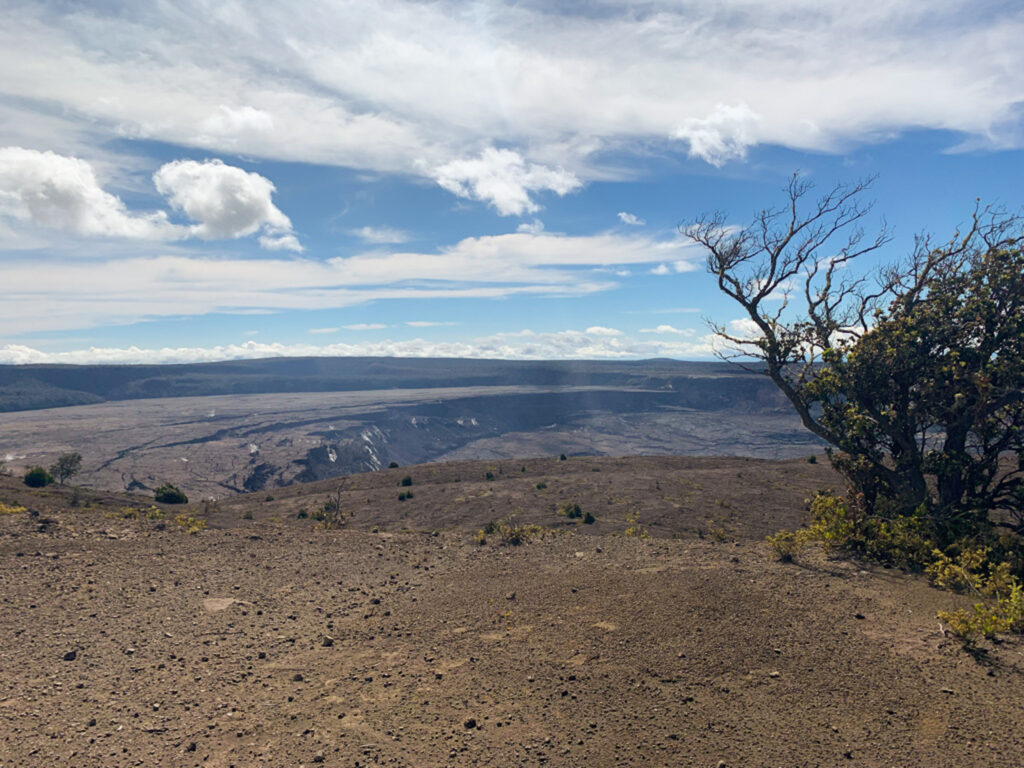
Getting to Hawaii Volcanoes National Park
Hawaii Volcanoes National Park is located right in the center of the Big Island of Hawaii.
Step one is to get to the Big Island, which is quite remote, especially from the US mainland. Most flights from the mainland will have a connecting flight through Honolulu.
The two biggest cities on the Big Island are Hilo and Kailua Kona, although Kailua Kona is a little bit further from the National Park. We recommend flying into Hilo on the Big Island.
From Hilo, it is only a 45-minute drive to the park, and we highly recommend renting a car.
Hawaii Volcanoes National Park Entrance Fee
| Pass | Price |
| Standard | 15-30 |
| Annual | 55 |
| America the Beautiful (including Senior) | Free-$80 |

Best Things to Do in Hawaii Volcanoes National Park
(1) The Crater Rim Drive
It’s not a trip to Hawaii Volcanoes National Park without Crater Rim, a scenic drive that circles the summit of the Kilauea volcano. Make sure to stop at the Kilauea Overlook, the Devastation Trail, and the Jaggar Museum Overlook.
There is a Crater Rim Trail that can be hiked, but since it’s also mostly accessible by car, we recommend driving and saving your hiking energy for other trails.
(2) Hike the Kīlauea Iki Trail
We’ll get into this one in the next section, but this 4-mile (6.4 km) loop trail is absolutely stunning. If you are going to do just one hike in the park, let it be this one. Descend into the crater through a lush rainforest and walk across the crater floor, a moon-like area.
(3) Walk the Thurston Lava Tube
The Thurston Lava Tube was created by flowing lava in ancient days and is now a walkable tunnel that takes about 20 minutes to walk through. It’s a great add-on to the Kīlauea Iki Trail or makes a short walk for families looking for less strenuous activity.
(4) Visit the Chain of Craters Road
This drive is also beautiful and scenic, descending 3,700 feet (1,127 m) throughout 19 miles (30 km) and ending at the coast. Along the way, you should stop at the Pu’u Loa Petroglyphs, the Mauna Ulu Crater, and the Holei Sea Arch.
(5) See the Pu’u Loa Petroglyphs
The Pu’u Loa Petroglyphs are along the Chain of Craters Road and are a must-see. A short hike will take you to a petroglyph site offering insights into the island’s native culture and history. The hike is only 1.4 miles (2.25 km) round trip, where you can see around 23,000 images.
(6) View Lava Flowing
Not everybody is going to be lucky enough to see lava flowing, but if there is current volcanic activity during your visit, you absolutely should check it out. The best view occurs before sunrise or after sunset for maximal contrast.
Check out the park’s website for the most accessible viewing areas as they can change frequently depending on volcanic activity.
(7) Hike to Mauna Ulu Eruption Site
This hike of 2.5 miles roundtrip (4 km) is of relatively moderate difficulty and takes you to the Mauna Ulu Eruption Site. There, you can see the aftermath of the eruptions between 1969 and 1974 (yes, super recently!).
This area is beautiful, with lava trees and panoramic views of the volcanic landscape.
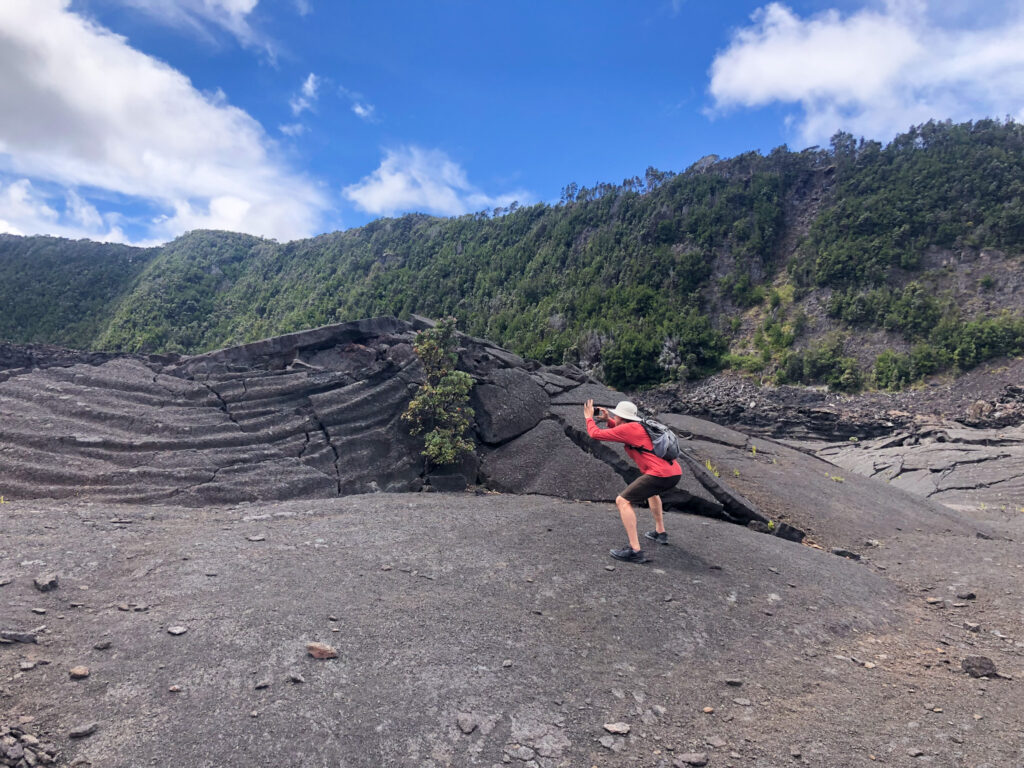
Top 2 Hiking Trails in Hawaii Volcanoes
Kīlauea Iki Trail, 4 miles (6.4 km)
The best trail is the Kīlauea Iki Trail, a loop of 4 miles of moderate difficulty. If you only do one single hike in the national park, let it be this one. This hike starts on the rim of the crater and descends into the floor, where you’ll pass through a green rainforest and enter what feels like the surface of the moon.
The entire route takes you from the top of the rim, down to the crater floor, and back up again on the other side. Given the slight incline entering and leaving the crater floor, the hike takes about two to three hours to complete but is not very difficult.
Thurston Lava Tube, 1.5 miles (2.4 km)
The Thurston Lava Tube is a moderate 1.5-mile trail, making a great add-on to the Kīlauea Iki Trail, beginning at the Kīlauea Iki Overlook. Explore the Thurston Lava Tube as a quick detour, or drive to the parking lot at the end of your hike.
The Thurston Lava Tube is relatively short, where you walk through a 500-year-old lava tube. Luckily, there is no more hot lava flowing through it, but it is still awesome to visit.
What Should You Bring for One Day in Hawaii Volcanoes National Park?
- Snacks and Water – national parks are notorious for not being the greatest sources of food. If you want a meal or a couple of snacks, make sure to eat before you begin your trip or pack a few snacks. Of course, water is a no-brainer!
- Insect Repellent– we visited in September and didn’t encounter a single insect, but if you’re visiting in the dead of summer, mosquitos call this national park home as well. Make sure to bring your repellent of choice.
- Sun Protection– no matter the sun coverage, it is so important to stay protected against UV rays. Bring all forms of sun protection including UV shirts, hats, sunscreen, and more.
While hiking within the rainforest certainly provides a lot of tree coverage, once you go out into the crater floor, you are fully exposed. You certainly don’t want to come home with a sunburn as a souvenir. - Rain Gear – ditch the umbrella, as these can be notoriously difficult to hike with. Bring a light rain jacket, especially in the summer months when afternoons bring short bursts of tropical storms.
- Comfortable Hiking Shoes– hiking in Hawaii Volcanoes National Park isn’t as steep or rocky as some other parks, so trail runner shoes will be perfectly fine. You won’t need ankle support or hiking boots, but closed-toed shoes are recommended.
- Flashlight– if you plan on exploring the park after dark for stargazing, or even if you want to go into the Thurston Lava Tube and want to be extra prepared, a flashlight is a good, small addition to your backpack for the day.
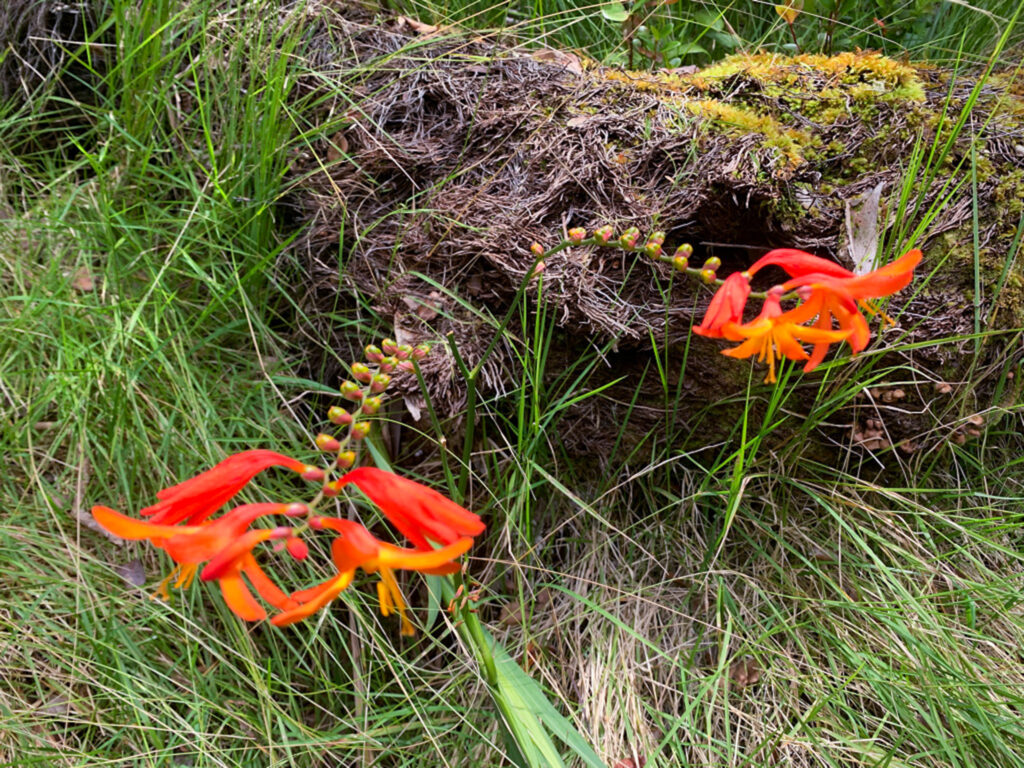
Where to Stay for One Day in Hawaii Volcanoes National Park
You are more than welcome to stay in the town of Hilo, located 45 minutes away, if you want to be near the airport. However, if you want a secluded experience in the jungle near the park, these 3 bookings are our top choices.
| Price | Name | Benefits |
| Budget (Average $50/night) | Simple Rustic Studio Deluxe Bed in Tropical Fruits Garden (8.0 stars on Booking.com) | 30 minute drive to the park entranceRemote location providing relaxationSimple rooms but gorgeous garden grounds |
| Mid-Range (Average $170/night) | Kilauea House (9.8 stars on Booking.com) | 7 minute drive to the park entranceBed and breakfast with a la carte and continental breakfast providedClean, comfortable, wonderful hosts |
| Mid-Range (Average $163/night) | Volcano Eco Cabin & Eco Lodge (9.5 stars on Booking.com) | 15 minute drive to the park entranceBeautiful eco-friendly location in the jungleTidy individual cabins with kitchens |
FAQs About One Day in Hawaii Volcanoes National Park
What is the best time of day to visit Hawaii Volcanoes National Park?
It’s a good idea to plan the timing of your trip depending on what you would like to see in the park.
Early morning brings in cooler temperatures and fewer crowds as well as wildlife and dramatic lava viewing.
Late afternoon to evening is perfect for sunset viewing which is gorgeous if there is volcanic activity.
Evening and nighttime are also the best for stargazing. The park has wonderful opportunities thanks to its remote location and low light pollution.
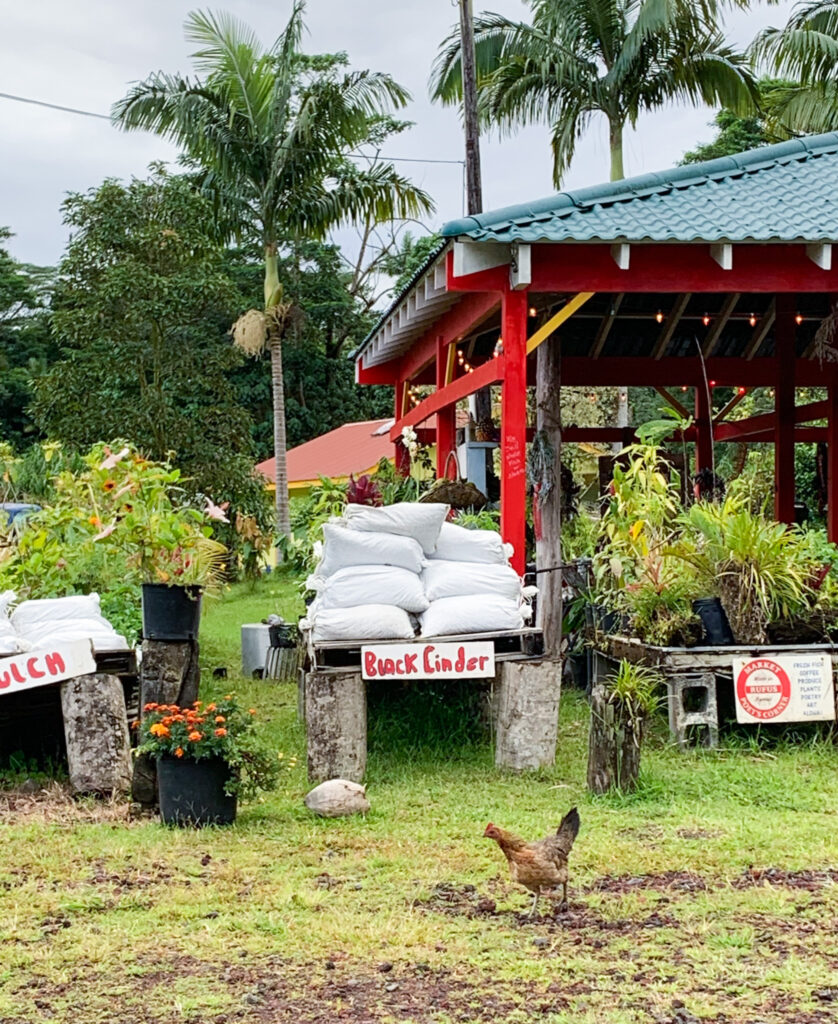
Why should you visit Hawaii Volcanoes National Park?
Hawaii Volcanoes National Park is one of the most unique parks in the US! It is hard to say that there are many other places where you can hike two of the world’s most active volcanoes. If you are interested in seeing volcanic activity up close, this is the place to do it.
There are so many ecosystems from the rainforest to lava fields, and with 150 miles of hiking trails, there is no shortage of things to do.
Is it safe to visit Hawaii Volcanoes National Park?
Hawaii Volcanoes National Park is the site of two of the world’s most active volcanoes. However, thanks to constant research and very attentive Rangers, it is safe to visit as long as you heed the caution of the experts.
There can be volcanic activity, and if it happens to occur before or during your visit, listen to the Rangers, and they will tell you which areas to avoid to stay safe.
How big is Hawaii Volcanoes National Park?
Hawaii Volcanoes National Park spans 505 square miles which includes the summits of the active volcanoes of Kilauea and Mauna Loa.
We hope you enjoyed this itinerary for one day in Hawaii Volcanoes National Park! Whether you want to drive around the Crater Rim, go stargazing, or take a hike, there’s something for everyone in this incredibly unique park.
Don’t forget to check out other destinations in North America.
Happy sampling!

